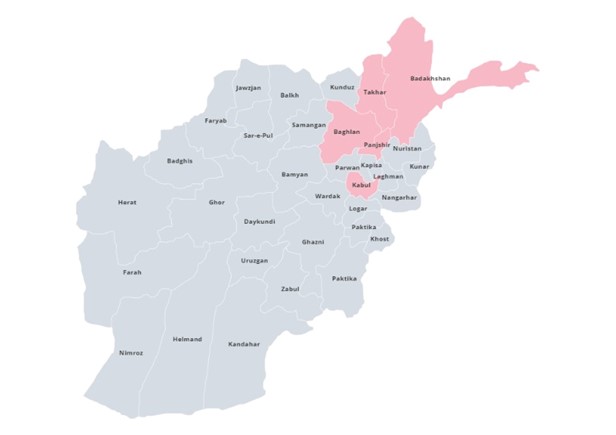COMMON ANALYSIS
Last update: May 2024
The map below summarises and illustrates the assessment of indiscriminate violence per province:
Figure 4. Level of indiscriminate violence in Afghanistan (based on information up to 12 January 2024).

|
|
Indiscriminate violence is also taking place, however not at a high level. A high level of individual elements is required in order to substantiate subsidiary protection needs under Article 15(c) QD. |
|
|
|
|
|
There is currently no real risk for a civilian to be personally affected by indiscriminate violence within the meaning of Article 15(c) QD. |
|
|
No province in Afghanistan is currently assessed to reach such an exceptionally high level of violence that ‘mere presence’ on the territory would be considered sufficient in order to establish a real risk of serious harm under Article 15(c) QD. Also, no province in Afghanistan is currently assessed to reach such a high level of violence that a lower level of individual elements would be considered sufficient in order to substantiate subsidiary protection needs under Article 15(c) QD.
|
|
Indiscriminate violence is taking place in the provinces of Badakhshan, Baghlan, Kabul, Panjshir and Takhar. However, this violence does not reach a high level. Therefore, a high level of individual elements is required in order to substantiate subsidiary protection needs under Article 15(c) QD. Moreover, a significant proportion of the civilian fatalities in these provinces is considered to be the result of security incidents of a targeted nature. |
|
|
In the remaining provinces of Afghanistan (including Badghis, Balkh, Bamyan, Daykundi, Farah, Faryab, Ghazni, Ghor, Helmand, Herat, Jawzjan, Kandahar, Kapisa, Khost, Kunar, Kunduz, Laghman, Logar, Nangarhar, Nimroz, Nuristan, Paktika, Paktiya, Parwan, Samangan, Sar-e Pul, Uruzgan, Wardak, and Zabul) it is assessed that there is currently no real risk for a civilian to be personally affected by indiscriminate violence within the meaning of Article 15(c) QD. This may be because the criteria for an armed conflict within the meaning of this provision are not met, because no indiscriminate violence is taking place, or because the level of indiscriminate violence is so low, that in general there would be no real risk for a civilian to be affected by it. |
In view of the fluidity of the ongoing conflicts, the most recent available COI should always be taken in consideration.

